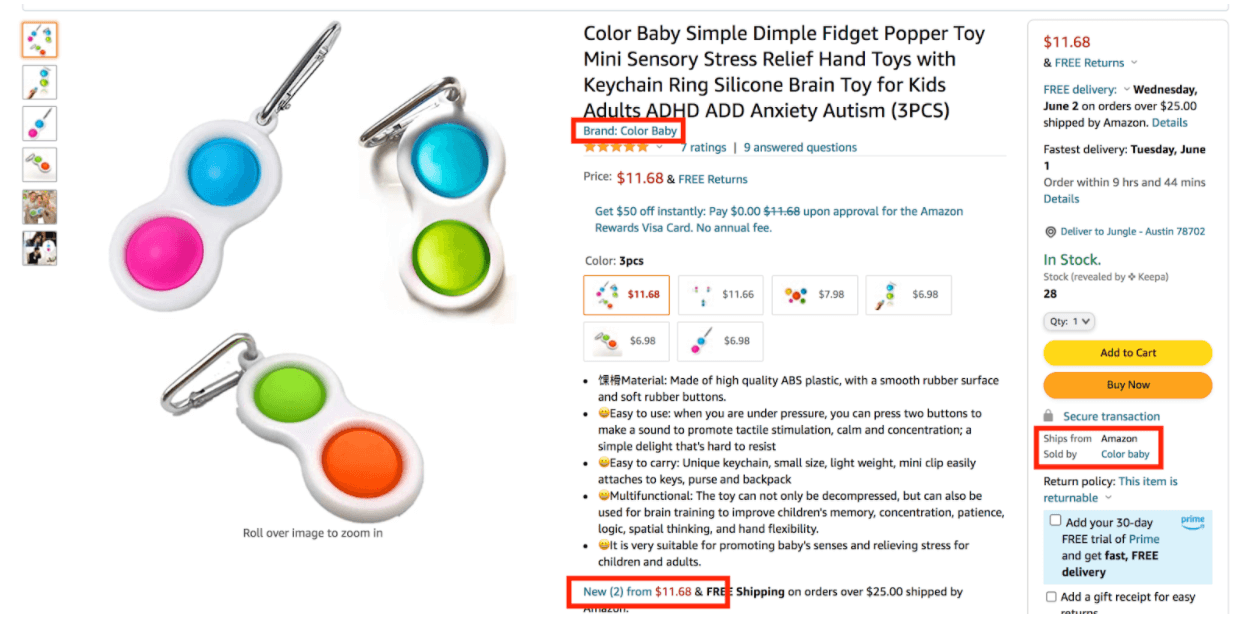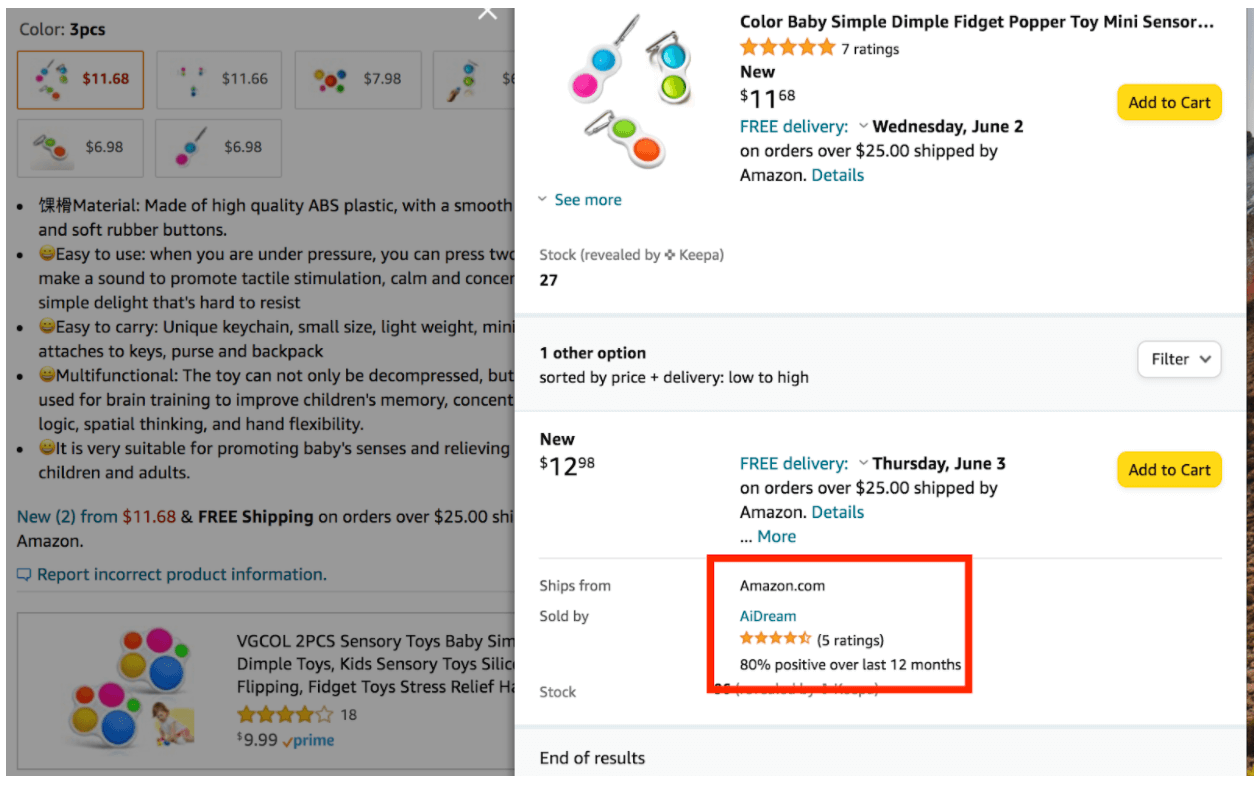Amazon is a huge and ever-evolving marketplace where new opportunities emerge every day. In fact, 58% of consumers say that if they could only shop from a single store, it would be Amazon. But where there is an opportunity, there are people always looking to take advantage of others’ hard work. Cue the ruthless Amazon “hijacker”.
Competitive listing hijackers are only successful when a seller isn’t aware they exist. There definitely are people who can hijack your listing on Amazon, but you can take preemptive steps to make it difficult for them to get away with it.
In this post, I want to review what Amazon hijackers do, how you can protect your listings, and how to take action should something happen.
What does it mean to have your listing “hijacked”?
This means that someone is selling a counterfeit or similar version of your private label product. This is particularly frustrating to a private label seller, as you took the effort to create your own brand and product specifically so you can avoid competing with other Amazon sellers to control the Buy Box.
Having your listing “hijacked” is a major concern among Amazon sellers. In fact, 48% are worried about hijackers creating copycat listings, according to our 2021 State of the Amazon Seller Report.
Hijacking example
Let’s take a closer look at how hijacking appears on Amazon, so you can spot its telltale signs. As an example, I found a listing for a fidget popping toy that has two sellers. Since it’s a private label product, it should have only one seller.

I highlighted a couple sections on the product detail page that indicate it might be hijacked: the brand (Color Baby), the “Ships from” and “Sold by” information, and the line at the bottom of the product description bullets that reads, “New (2) from $11.68…”. This last clue means that there are 2 or more sellers on this listing.
Since the brand name and the seller name match, I know this product is private label. There are a couple reasons why there would be more than one seller on a private label listing.
- The brand owner approved another seller
- The other seller purchased this product from a coupon site and are reselling it
- The other seller is “hijacking” the listing and selling counterfeit items
Granted, I don’t know these sellers, and can’t confirm if this is a true case of hijacking. But for the purpose of this example, let’s assume we’re witnessing reason number three in action.
After clicking on “New (2) from $11.68,” we are brought to a screen that displays all of the sellers on the listing. We can see that the original offer for this product is from the brand Color Baby, who owns the Buy Box.

Looking below Color Baby’s offer, we can see that the other seller is “AiDream.” They have an overall seller feedback rating of 80%, which isn’t bad, but it’s not great either — another clue that this may be a hijacking situation.
Side note: As a seller, it should be your goal to be as close to 100% seller feedback as possible.
The evidence suggests that AiDream has hijacked the listing, and is attempting to sell a generic or counterfeit version of the Color Baby product under the Color Baby brand — even though they do not have stock of the original product.
Please keep in mind that this is just an example — if AiDream is an authorized seller of Color Baby products, this would not be a true case of hijacking. But you can use the same clues to determine whether your listing has been hijacked by another seller. If you notice someone else competing with you for your own Buy Box and you haven’t authorized it, you’ve probably been hijacked.
The impact of hijacking
A hijacked listing impacts both your customers and your bottom line.
Picture this: an unsuspecting customer purchases your product. But instead of receiving an original product from you, the following ordeal ensues: your Amazon hijacker owns the Buy Box, gets the sale, and the customer receives a counterfeit version. Unhappy with their purchase because the quality is poor, the customer leaves a negative review on your listing. You get a bad review for something that you don’t even sell, discouraging future visitors from purchasing your product. How frustrating!
How to fend off Amazon hijackers
A smart but simple strategy to deal with Amazon hijackers is all you need. Here are five ways to protect your listing and strengthen your business at the same time:
1. Monitor your listing closely
Beyond just checking in on your Seller Central dashboard every day, you will want to see your listing from your customers’ point of view. Look at your listing to see how many sellers are selling your private label product. If it’s more than one (that one seller being you!), then you may have a hijacker situation on your hands. You don’t need to check your listing every day — weekly will do, especially as your sales start to ramp up and competitors take note of your success.
2. Build your own ecommerce site
If you are able to create your own ecommerce channel outside of Amazon (sites like Shopify or Square Space make it easy to set up your own ecommerce store), you can strengthen your business fort against Amazon hijackers. Being able to verify your business through your website builds credibility and trust with your customers, and you’ll always have a home base outside of Amazon to sell your products online.
3. Brand your products better
If you create better branding on your product listing and show that you have a distinct brand and logo on the actual product and packaging, you may deter the lurking pirate. You’ll be clearly presenting your brand identity to the customer, and if they order your product from a counterfeit seller, then the customer will be able to immediately recognize that what they’re buying is not the same brand as yours.
When taking your product photos, do your best to show off the branding on the packaging and the product itself. This is best practice regardless, as you are investing in developing the brand and your marketing collateral. You worked hard to create your brand — might as well show it off proudly to your customers!
4. File a complaint with Amazon
You can submit a complaint with Amazon with one form. You will have to gather your evidence — which means actually purchasing the product from the offending seller — document all the ways in which it is counterfeit and deceitful, and submit it to Amazon.
Be as thorough as possible here, with as many photos and details as you can collect to compare your product to counterfeit version. Keep in mind that Amazon wants to protect its customer experience as much as possible. If it’s clear that the counterfeit will result in unhappy customers, they will take action.
5. Enroll in Brand Registry
Enrolling in Amazon’s Brand Registry is one of the best ways to protect yourself and your brand on Amazon. Not only will you have access to incredibly powerful marketing tools, you’ll also have more control over your listings.
If you have an IP or counterfeit concern, Brand Registry offers a dedicated internal team for submitting and escalating IP infringement claims. Keep in mind that this won’t necessarily prevent hijackers from hopping on to your listings — you’ll have to stay vigilant on that front — but you will have more protection as a registered brand.
Brand registered sellers can also leverage Amazon’s Transparency Program, a product serialization service that enables Amazon to authenticate each of your items before it is shipped to the customer. That way, the end customer receives an authentic product, not a cheap knock-off.
Having to deal with Amazon hijackers and their questionable principles is an unfortunate side of selling on Amazon. There will be people who want to prey on others’ success and turn a quick dollar anywhere you go.
There is, however, too much hay to be made to worry about these people as your main priority. If you follow the steps outlined above, and continue moving towards developing a strong brand with well-curated products and marketing strategies, your success will overshadow the hijackers who feast on the crumbs they can gather from you. Okay, now onwards!
Have you ever come across an Amazon hijacker on a listing? Tell us about it!

 91 Comments
91 Comments
91 comments on “Amazon Hijacking: 5 Ways to Protect Your Listing Right Now”